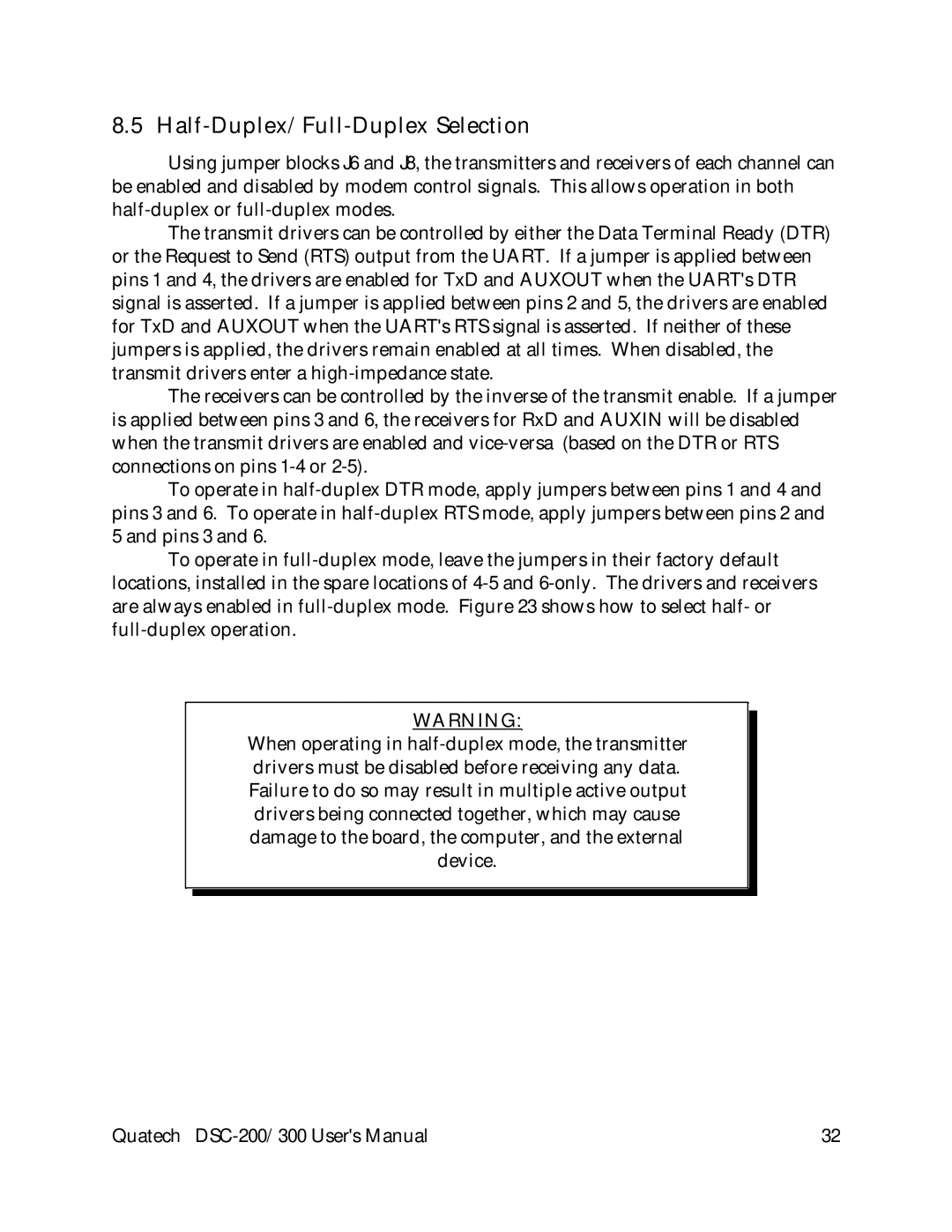
8.5 Half-Duplex/Full-Duplex Selection
Using jumper blocks J6 and J8, the transmitters and receivers of each channel can be enabled and disabled by modem control signals. This allows operation in both
The transmit drivers can be controlled by either the Data Terminal Ready (DTR) or the Request to Send (RTS) output from the UART. If a jumper is applied between pins 1 and 4, the drivers are enabled for TxD and AUXOUT when the UART's DTR signal is asserted. If a jumper is applied between pins 2 and 5, the drivers are enabled for TxD and AUXOUT when the UART's RTS signal is asserted. If neither of these jumpers is applied, the drivers remain enabled at all times. When disabled, the transmit drivers enter a
The receivers can be controlled by the inverse of the transmit enable. If a jumper is applied between pins 3 and 6, the receivers for RxD and AUXIN will be disabled when the transmit drivers are enabled and
To operate in
To operate in
WARNING:
When operating in
Quatech | 32 |
